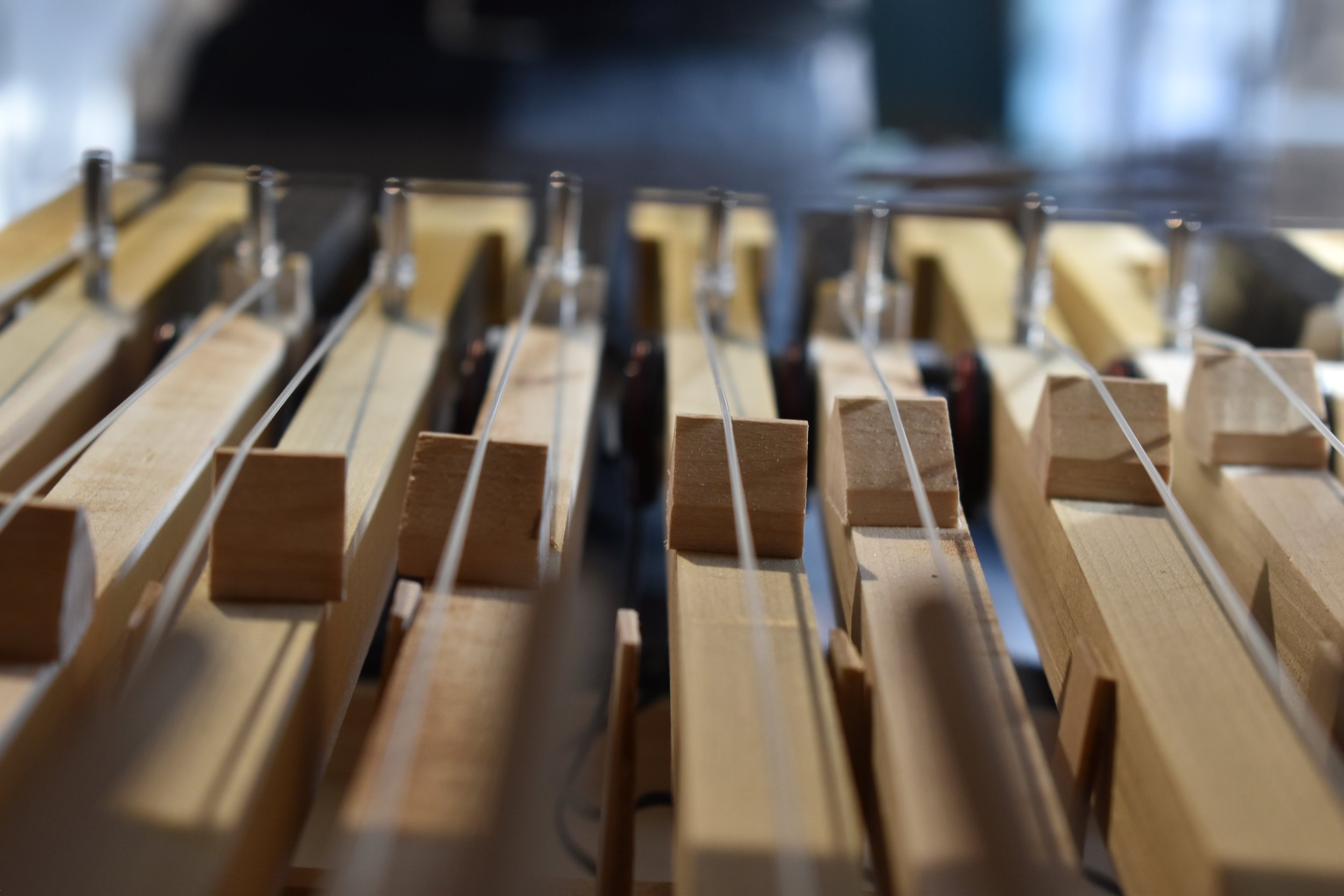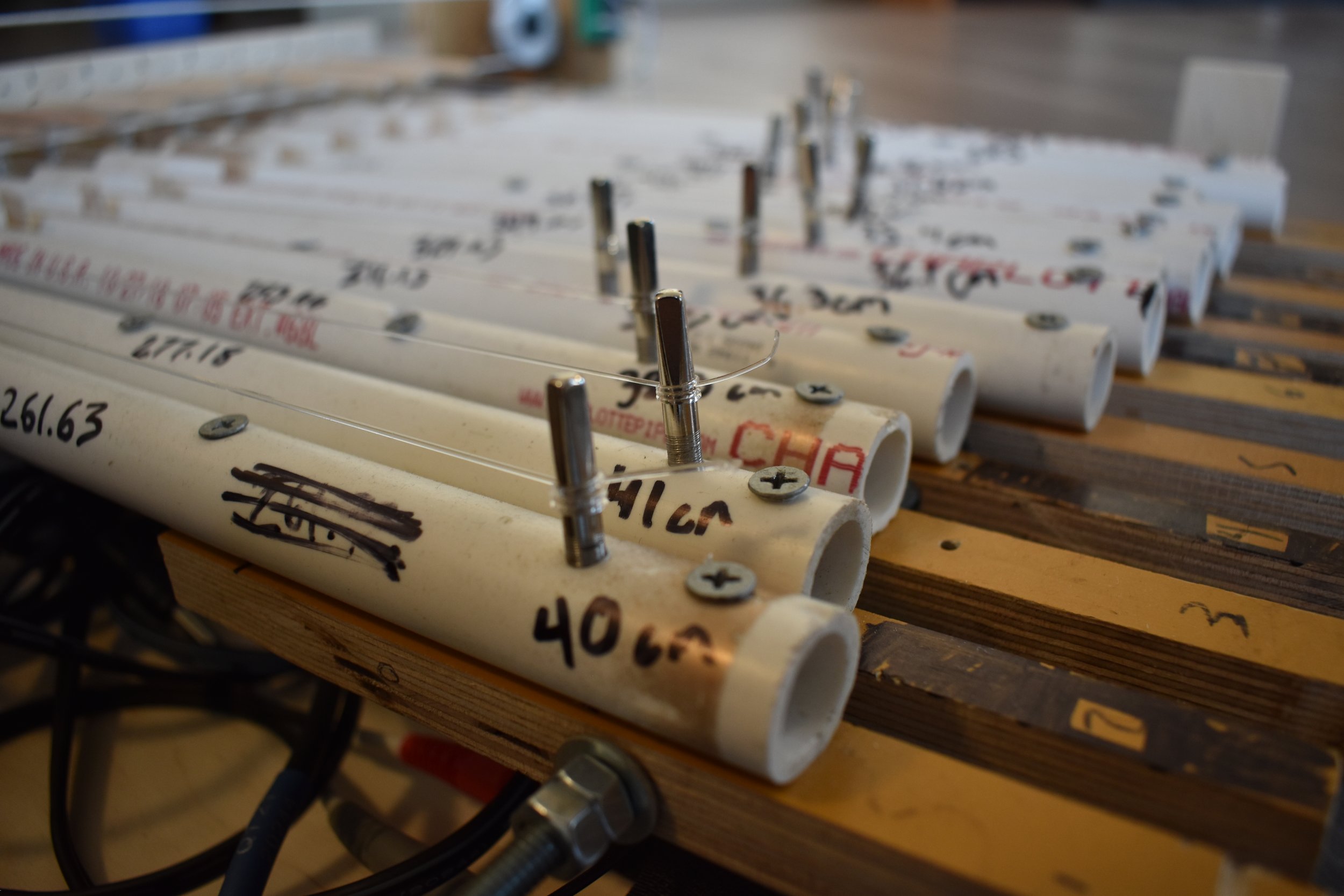dylan gee
Science & mathematics
the strophephone
Project statement
The Strophephone comes from the Greek for "chord" and for "sound". This is due to the strings of the instrument being activated by a length of cord that glides along them. This project was inspired by the abilities of the Hurdy-gurdy and Violin to play sustained notes using wheels and bows, respectively. I have never worked with either instrument in a serious capacity, so I wanted to create an instrument that would not only be more familiar to me, but also more accessible to musicians everywhere. The keyboard layout is common in the musical world and many people do not have the means to comprehensively learn a new-style of acoustic user-interface such as that of the Hurdy-gurdy. The Strophephone uses the fairly common 12-tone Equal Temperament system and is scalable to fill multiple octaves with the correct materials. This makes it adaptable to many different functions in a band or even an orchestra.
The instrument consists, at the moment, of thirteen keys from middle C to the next octave up. Each of these keys sits on a pivot that allows the user to press any of these keys at once and bring them up to the loop of cord. This cord is attached to an electric motor, allowing it to be constantly moving, or bowing, as the instrument is played. The chord works as a bow across each of the pressed keys and creates a continuous tone for each one as long as the keys are pressed. Each key also connects to an electric pick-up, therefore allowing the sounds produced to be amplified and heard or recorded more easily.
This project continues to change and get better as time passes. Each iteration becomes easier to play and more consonant in tone. I hope to one day create a finished version with many more notes available in order to make this instrument more dynamic and fun.
About the Artist
Dylan Gee grew up in Southwestern Wisconsin in the Town of Black Earth. Over the years he worked to learn how to play the piano and studied music as a hobby. In high school, he mostly focused on the more STEM based courses while still keeping an appreciation for the arts. He was a very active member of his school's different bands, and of the Drama department. Eventually, he found an interest in filmmaking from an annual short film competition that was held in his high school. Now going to school for film, he was worried that his passion for music would be pushed to the side for the sake of other creative pursuits.
Growing up around family members who were mechanics and craftspeople led him to create his own projects over the years. He worked on many small woodworking projects, a few collages, a handful of paintings, and even photography. This aimlessness in what to pursue was focused into the medium of film and video, and these past passions fell to the side.
Luckily, while going to school at Columbia College Chicago, these two interests of music and craftsmanship were allowed to finally come together. This came in the form of the Science of Musical Instruments course provided by the college. Here, Dylan was allowed the freedom to create what he was looking for in an instrument and combine his knowledge of music with his desire to create. With his excitement for audio and building rekindled, he hopes to continue to create projects that will reshape how he thinks about music.
“Dylan Gee was an exemplary student during the FA 21 semester in my course, Science of Musical Instruments Honors. This is a lab-based class where students learn the basic scientific, physics, and mathematic principles which underlie the operation of acoustic musical instruments and the numeric pattering of musical scales. The course capstone is for students to design a custom acoustic musical instrument of a defined musical scale and then to perform an original musical composition on the instrument. Dylan came to the class with strong practical knowledge of musical scales and composition and with keyboard performance skills. He had a vision of a very specific and unique musical instrument that he wanted to create, based on the “rotating wheel” concept utilized in the Hurdy-Gurdy. But he took the concept quite a bit further, incorporating a piano keyboard mechanism with each individual note composed of pressable wooden key which engages a tuned string with a rotating string “bowing” mechanism controlled by an electronic Arduino modular system. This instrument is a synthesis of an acoustic chordophone instrument with a controllable mechanical wheel and electronic processing capability which is fully responsive to the performers live creativity in a manner I had never seen previously. His Strophephone is a completely novel and unique creation that makes music! I think it will be a fine visual and auditory addition to the Hokin Honors Exhibition.”
— David Dolak, Instructor of Science of Musical Instruments, Honors










